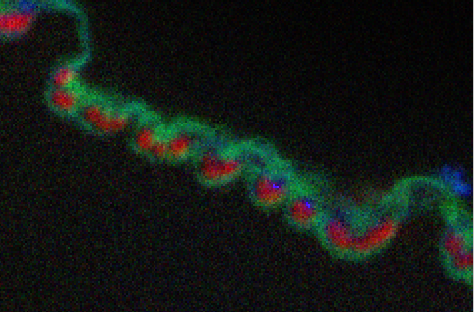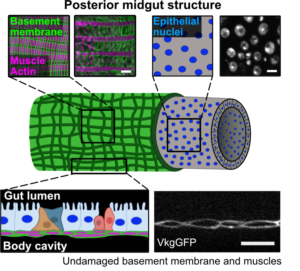Research
Wound healing
In most epithelial wounds, both the cell layer and the extracellular matrix (basement membrane) are damaged. To heal, cells at the wound margin must sense the wound, adopt a migratory front-rear polarity while maintaining their collective architecture, extend or migrate in the direction of the wound, and then re-establish a quiescent apical-basal polarity after the wound is closed. How do epithelial cells coordinate these activities? We are using a Drosophila epithelial model of wound healing because the tissue heals rapidly, within about half a day. We collaborate with physicists in the laboratory of Shane Hutson (Vanderbilt Physics) to understand the signals that emanate from an epithelial wound and how the cells interpret and respond to these signals. (Junmin Hua)
Basement membrane dynamics


Basement membrane is an important sheet-like extracellular matrix that mechanically stabilizes epithelia, muscles, and many other tissues. Basement membranes are damaged during tumor metastasis, kidney failure, and tissue wounds, and repair is critical for restoring tissue function. We are using several models to analyze basement membrane repair, including mechanical pinch wounds in larvae and feeding adult flies a matrix damaging agent. We find that basement membrane is repaired rapidly, forms a scar at the site of damage, and uses mechanisms that are a bit different from the mechanisms of normal basement membrane embryonic development. These studies suggest that basement membranes are significantly more dynamic than previously assumed. (Aubrie Stricker, Kimberly LaFever, Elkie Peebles)
